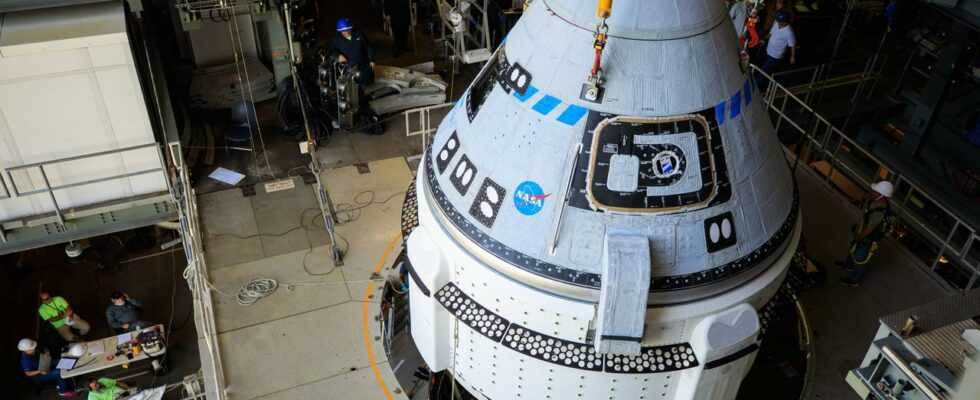Since its failed orbit test in December 2019, the Boeing vehicle has been stationary. In question, a long investigation, persistent technical setbacks and numerous delays.
To finally draw a line under this slump, the OFT-2 mission should take off on the night of May 19 to 20. A key moment. It must be said that Boeing has spent lavishly…
Starliner: 3, 2, 1, take off?
This time it has to work. The Starliner capsule and its Atlas V launcher are ready and will soon reach launch site 41 at Cape Canaveral.
On board, during the takeoff scheduled for the night of Thursday to Friday (May 20 at 12:54 a.m. Paris), there will be no astronauts for this OFT-2 mission, or Orbital Flight Test . Or at least, no human… Because the dummy “Rosie” resumes service on board and should, if all goes well, join the International Space Station the following night, for an automated docking.
The Starliner capsule will then remain attached to the ISS for 5 to 10 days, depending on the operations and tests on board. Without forgetting the weather, in particular the winds, on the recovery site… Before undocking and crossing the atmosphere to land with its parachutes in the New Mexico desert. This is the last test, the last validation for Starliner before obtaining authorization to transport NASA astronauts.
Mission for Boeing, don’t dwell on the past
Nevertheless, the tension will be at the rendezvous. The profile of the mission seems simple, when we know the ballet organized regularly by Soyuz, or the adventures of the SpaceX Crew Dragon capsule over the past two years (already seven manned missions)… There is however no place for the error, and the Boeing teams know it well.
In December 2019 for flight OFT-1, Starliner’s improperly set on-board clock ordered a series of orientation maneuvers at the wrong time, emptying the tanks while they were corrected. Then, two days later, when the capsule was returning for lack of being able to approach the ISS, it had narrowly missed being hit by its own service module.
NASA had ordered a long investigation, the results of which were not very glorious, for Boeing as for the agency. Because the latter remains responsible, in this public-private partnership, for verifications for the certification of the flight. Starliner’s setbacks did not stop there, however: after a long period of corrections and delays, the capsule finally ready on its launch site in August 2021 could not take off, the fault of a series of faulty valves on its thrusters. A defect that is still not 100% identified today, Boeing officials explaining that they might request a design change… on a future flight.
Hurry up
This third attempt must therefore go well. An imperative for NASA on the one hand, which absolutely wants to guarantee access for its astronauts to low orbit (and therefore have two independent suppliers). But for Boeing too, because the American agency pays a fixed price: any overrun is the responsibility of the manufacturer. And the Seattle giant, in addition to an obvious image problem, has already spent more than $595 million on the Starliner file since 2019.
A chasm for a capsule that is three years behind that of SpaceX, which does not yet have an order for private missions and which will at best only be able to take astronauts for regular rotations to the ISS in a year (a manned flight test should take place uncrewed for a long time).
Could Starliner survive new problems? Nothing is less certain, so there will be a lot of people crossing their fingers on the night of May 19 to 20…
On the same subject :
SpaceX defies statistics and (already) passes the milestone of 20 take-offs in 2022
Source : NASA

6